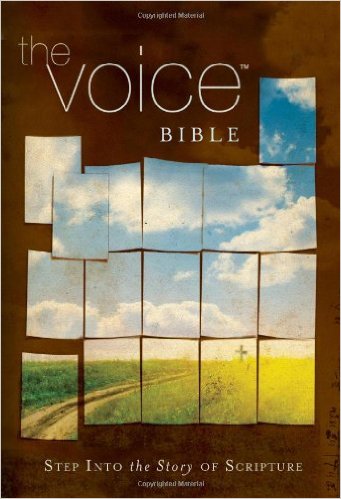I grew up in a family in which innovation regarding the Bible was frowned upon. If our version was good enough for dad, it was good enough for everyone. Much of what is called “innovation” these days is really just marketing to generate sales. However, recently I encountered two “new” Bibles that are truly noteworthy for their innovative merits.
The Books of the Bible
 “The Books of the Bible” is published by the International Bible Society. Its innovations are:
“The Books of the Bible” is published by the International Bible Society. Its innovations are:
- No chapter and verse numbers. Rather, the texts are presented in paragraph, poetic verse, or conversation as is appropriate to the genre of the texts. Granted, it makes it a little hard when you are looking for a verse, but it is no harder than it was for the original recipients of the biblical documents.
- No headings or notes. The editors have let the texts (and text blocks) speak for themselves. And they have not inserted interpretation via headings and subheadings. There are also no notes for explanation or interpretation.
- Book order (OT). The OT books are organized according to the order in the Hebrew Bible, namely Law, Former Prophets (historical books), Latter Prophets (prophetic books), and Writings (including Chronicles, Ezra, Nehemiah, Esther, Daniel). It is the only English Bible I’ve ever seen to give respect to the Hebrew order.
- Book order (NT). The NT books start with Luke-Acts, followed by Paul’s letters in the order in which they were likely written, and logical groupings of the rest of the books which came later (Matthew with Hebrews and James, Mark with Peter and Jude, John’s Gospel with John’s Letters, and Revelation). Again, it is the only English Bible I’ve ever seen that takes the temporal order and logical grouping of books seriously.
I have to say that “The Books of the Bible” has become one of my favorite Bibles for reading. It has also become a valuable tool for understanding the author’s intention in the form in which it was written.
The Voice Bible
 “The Voice Bible” is published by Thomas Nelson. Its innovations are:
“The Voice Bible” is published by Thomas Nelson. Its innovations are:
- Screenplay. The presentation bears resemblance to a screenplay, particularly with the character being identified whenever speaking. Similarly, inserted notes function like a narrator’s comments in a movie. “The Voice” is more than just a clever name, it accurately describes the approach taken by the publisher. It will be a welcome contribution to those who focus on the story of God’s plan as presented in the Bible.
- Development team. The people behind “The Voice” at the outset include a pastor (who is also a writer), a fiction writer, a poet, a Vietnamese pastor and poet, and a writer/research assistant. The development team is marked by artists, performers, and writers, not just biblical scholars.
- Divine names. They claim that “Christos is not a name at all; it is a title,” so they don’t simply transliterate it as “Christ,” but translate it as “The Anointed.” Similarly, rather than use “Yahweh,” “Jehovah,” or “LORD” as transliterations of YHWH, they use “the Eternal One” which is more in keeping with the meaning of YHWH.
- Contextual equivalence. The translation of divine names above are examples of their translation philosophy of contextual equivalence. Other examples includes “emissary” for apostles and “heavenly messengers” for angels.
- Notes. Unfortunately, the notes are so large and intrusive that they take on a “voice” of their own (they are even marked with a “V”). The historical and interpretative commentaries inserted into the biblical texts often seem to drown out the sound of the text itself. Nonetheless, the notes are helpful, but I would have preferred for them to have been kept to the preface or as footnotes.
The story and philosophy behind “The Voice” is published in The Story of The Voice by David B. Capes with Chris Seay and James F. Couch, Jr.